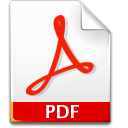
Supplements and Featured Publications
- The Next Era of Anticoagulation Therapy
- Volume 10
- Issue 3 Suppl
CME QUIZ
Instructions
For each question, please circle the best response on the answer key provided on page S84. A statement of credit will be mailed to those who successfully complete the examination with a minimum score of 75%.
1. The prevalence of atrial fibrillation (AF) in patients aged 80 years or older is:
- 2%
- 20%
2. The relative reduction in the risk of ischemic stroke with the oral vitamin K antagonist, warfarin, compared with aspirin is approximately:
- 68%
- 52%
3. Which of the following IS NOT generally considered an independent risk factor for stroke in patients with AF?
- Hypertension
- Older age
4. In which patients with AF will warfarin therapy be least likely to be cost-effective?
- Recent congestive heart failure
- Hypertension
5. Which of the following statements about anticoagulation management is/are true?
- The majority of patients on warfarin are maintained in the therapeutic range of international normalized ratios (INRs) (2.0-3.0).
- A and B
6. Which of the following statements about patient preferences for antithrombotic therapy are true?
- Patients with AF who are at high risk of stroke should use warfarin regardless of their preferences.
- A and C
7. Anticoagulation with the oral vitamin K antagonist, warfarin, is more effective than aspirin or no antithrombotic therapy to prevent ischemic stroke in patients with AF considered at moderate-to-high risk for stroke.
- False
8. Dosing of vitamin K antagonists can be problematic and often requires coagulation monitoring. All of the following have been linked to complications EXCEPT:
- Multiple drugs
- Dietary vitamin K in various amounts
9. Which of the following conditions IS NOT most commonly associated with AF?
- Thyroid disease
- Obesity
10. The risk per year of stroke in patients 65 years or older with no risk factors is:
- 2.5%
- 10%
The Next Era of Anticoagulation Therapy
GOAL
To provide current information on anticoagulation therapy for the treatment of atrial fibrillation.
TARGET AUDIENCE
This activity is intended for physicians, medical directors, pharmacists, pharmacy directors, P&T committee members, primary care physicians, and specialists in hematology and internal medicine.
EDUCATIONAL OBJECTIVES
After participating in this activity, participants should be better able to:
Explain the epidemiology and initial management of new-onset atrial fibrillation.
- Discuss the randomized trial evidence for the efficacy and safety of anticoagulants.
Describe the impact of anticoagulation therapy on costs, stroke risk, and quality of life.
- Identify the new antithrombotic drugs currently under study and review their impact on treating atrial fibrillation.
CONTINUING MEDICAL EDUCATION ACCREDITATION
The University of Pennsylvania School of Medicine is accredited by the Accreditation Council for Continuing Medical Education (ACCME) to provide continuing medical education for physicians.
Designation of Credit
The University of Pennsylvania School of Medicine designates this educational activity for a maximum of 2 category 1 credits toward the AMA Physician's Recognition Award. Each physician should claim only those credits he/she spends in the activity.
This enduring material was released in April 2004, and the CME certification will expire on April 30, 2005.
FUNDING
This educational activity is supported by an unrestricted educational grant from AstraZeneca.
Articles in this issue
over 21 years ago
Disclosuresover 21 years ago
Pharmacoeconomics of Atrial Fibrillation and Stroke Preventionover 21 years ago
Atrial Fibrillation and Strokes: New Drugs and a New Attitudeover 21 years ago
Epidemiology and Management of New-Onset Atrial Fibrillationover 21 years ago
Participating FacultyNewsletter
Stay ahead of policy, cost, and value—subscribe to AJMC for expert insights at the intersection of clinical care and health economics.














































